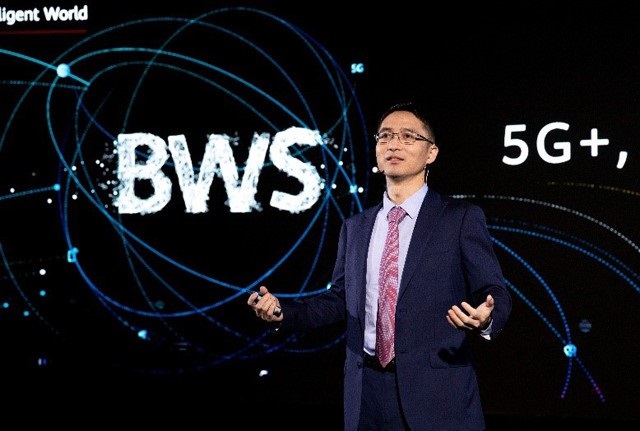
Huawei recently held its 5G+, Better World Summit, where various operators and industry partners shared their experiences of how 5G applications can drive significant business and industry efficiency.
“5G development has entered a new phase,” said Huawei Carrier CMO Bob Cai.
“With over 80 5G networks commercially available worldwide, determining how to leverage 5G to create more value is currently a topic of great interest within the industry.”
“Currently, 5G for business is still more of a branding concept, and more solid work needs to be done. To build a positive business cycle, work should be done in four aspects: technology, ecosystem, standards, and business model.”
5G will drive future business
Dimitris Mavrakis, research director of ABI research, highlighted that new ‘G’ technologies have historically offered major benefits to consumers.
5G, however, is likely to be most beneficial to the commercial sector.
By 2030, Mavrakis predicted that 5G’s impact on the global GDP will be over $7.5 trillion – compared to the $5.1 trillion 4G contributed in 2019.
“We expect that 5G will transform businesses in the same way 4G transformed consumers,” said Mavrakis.
However, he cautioned that it could take several years for the manufacturing world to adopt the technology.
Mavrakis also implored governments to provide opportunities for 5G to flourish within their countries, and highlighted ways that this is already being done, such as in the provisioning of free 5G spectrum and the reduction in taxation of carriers.
Several Huawei partners also highlighted the different industries that are already getting great benefits out of 5G.
Ports of trade
Xu Mengqiang, General Manager of China Mobile Ningbo, highlighted that several 5G implementations have resulted in substantial benefits to a Ningbo port.
These include 5G-powered self-driving container trucks, remote controlled cranes, and backhaul HD video streaming – which shows key cranes in real time.
The Ningbo port envisions that efficiency will be increased by over 260% while labour turnover will significantly reduced as a result of better and safer remote working environments using new 5G-powered technologies.
Agriculture
Dr Thomas Anken is the head of the Digital Production Federal Department of Economic Affairs Education and Research in Switzerland.
Anken highlighted that 5G is enabling a variety of smart farming methods that have a significant impact on the yields of farms in the country.
Examples include:
- Multispectral imaging of wheat fields by drones resulting in a 10% decrease in fertiliser usage.
- Tractors with an automated hoe that recognises plants and eliminates the weeds around them.
- The swift delivery of important intelligence to the cloud which ensures that automated robots receive data to update their machine learning capabilities, while farmers also receive insights into how they can optimise their processes.
Smart factories
Guo Lihong, Deputy Director of the Engineering Equipment Department of Hunan Valin Xiangtan Iron and Steel, explained that 5G is expected to increase the factory’s efficiency by 30% while reducing costs by the same margin.
5G is used with remote-controlled cranes and slag-adding arms to streamline the factory’s processes, and these cranes have improved production efficiency by 33%.
The ability for production line surveyors to watch real-time production through HD video has also optimised these workers’ jobs.
In total, the factory plans to build 100 5G macro sites as well as three management centres to continue to reap the benefits of 5G.
Hospitals
Hospitals in Henan province have implemented a variety of impressive 5G-powered functionalities to improve their response to the COVID-19 pandemic. This was particularly important to minimize human-to-human contact, and allow doctors to support patients remotely, or whilst standing safely behind a screen.
These systems were installed within 82 hours and involved the building of remote systems for 147 hospitals in 18 cities within the province.
Features that were available to these hospitals included:
- Remote surgery guidance.
- Self-driving vehicles to deliver equipment and sanitize facilities
- Robots through which doctors can talk to patients.
- Systems in ambulances which support first response teams – in an ambulance moving at 80km/h, backhaul speed is 50MB/s.
Tourism
5G- enabled Smart Tourism will generate benefits across the whole economy value chain. During the current pandemic 5G enables higher-quality broadcasting of tourism and wildlife attractions as well as in Virtual Reality to help with marketing and attracting tourists in the future. Imagine if a 5G enabled camera was strapped on an animal, surrounded by thousands of other animals during the migration, and you could experience that in high quality from home.
For tourists who come to Kenya, 5G will let customers use Augmented Reality on their phones or special wearable devices to experience tourist sites differently—just imagine overlaying images and seeing and hearing what Lamu Old Town and Port, or Fort Jesus used to look and sound like hundreds of years ago, or seeing some of the items in the National Museum in their original environment, or passing an item in a museum and immediately being able to see on your phone videos explaining it, or even helping you see inside it. Such experiences can not only enhance the visitor’s experience, but also generate additional revenue for the industry, and extend tourists’ stays.
Finally, hotels and tourist attractions can also use 5G to very quickly set-up wi-fi in hotels and wi-fi hotspots at tourist attractions which is a must nowadays.
Follow us on Telegram, Twitter, Facebook or subscribe to our weekly newsletter to ensure you don’t miss out on any future updates.





